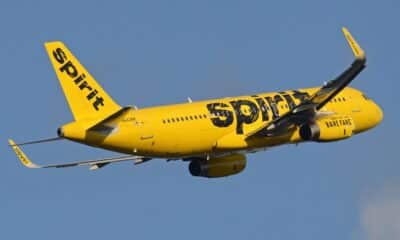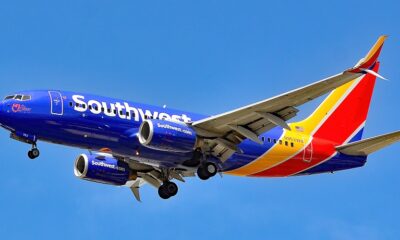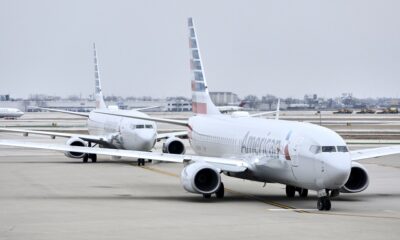Aviation
Top Quality Airline Rating 2018 in United States
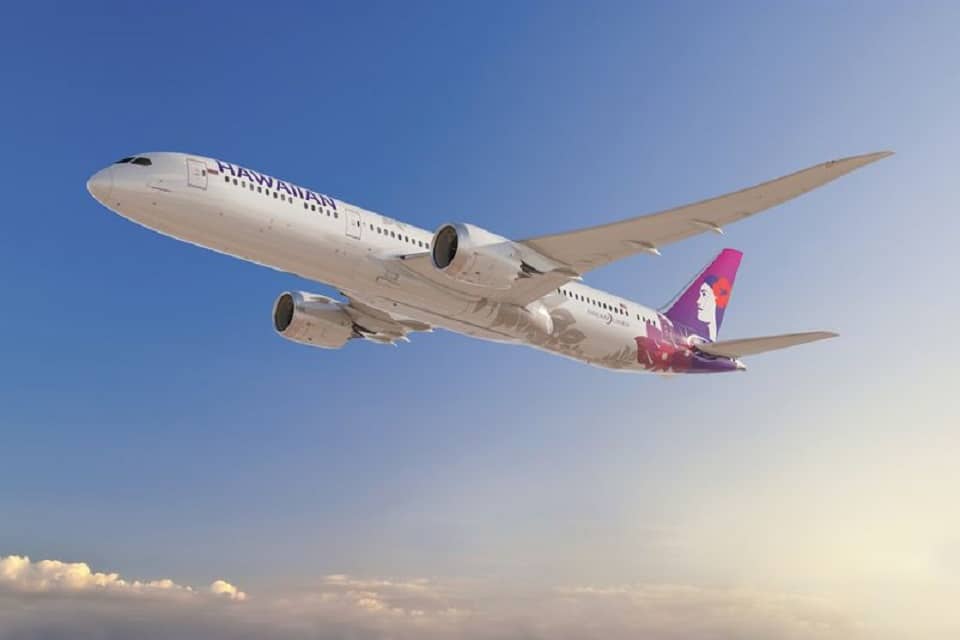
Top Quality Airline Rating 2018 in United States
The Airline Quality Rating industry score for 2017 shows an industry that improved in overall performance quality over the previous year. Nine airlines (American, ExpressJet, Frontier, Hawaiian, JetBlue, SkyWest, Southwest, Spirit and United) showed improvement in AQR scores in 2017.
1. Alaska Airlines
Founded in 1932, Alaska Airlines began on a route between Anchorage and Bristol Bay, Alaska. Shortly thereafter in 1934, a merger took place with Star Air Service, and while the airline changed several times, the name Alaska Airlines prevailed. During the 1940s, charter work including the Berlin Airlift and Operation Magic Carpet, aided thousands. Additional mergers in the late 1960s with Alaska Coastal-Ellis and Cordova Airlines further expanded routes. Alaska Airlines was also involved in the construction of the trans-Alaska Pipeline.
Service has continued to expand. The airline now has routes to the East Coast, Washington D.C., multiple Midwestern towns as well as Hawaii. Alaska Airlines contributes its success to its people, “their caring, their resourcefulness, their integrity, their professionalism, and their spirit.”
2. Delta Air Lines
A legacy carrier today, Delta Air Lines began as a crop-dusting operation, the Huff Daland Dusters, in Macon, Georgia. Passenger operations commenced in 1929, and the company became known as Delta Air Lines in 1934. In 1955, Delta blazed the trail with the implementation of the hub and spoke system for air travel. The company expanded by merging with Northeast Airlines in 1972 and acquiring Pan Am’s trans-Atlantic routes and the Pan Am Shuttle in 1991. Further expansion took place in 2008, as Delta acquired Northwest Airlines.
Today, along with Delta Connection, Delta Air Lines serves 312 communities in 54 countries. Together with members of the SkyTeam alliance, destinations span 648 cities in 123 countries on six continents. Delta’s 80,000 employees maintain and operate a fleet exceeding 800 aircraft.
3. JetBlue
Early in 1999, David Neeleman laid forth his plans for a new airline. By the end of the year, JetBlue (initially known as “New Air”), had secured 75 aircraft and as many slots at JFK. In February 2000, the airline began operations. By the end of the same year, over one million passengers had flown on JetBlue.
In the years that have followed, JetBlue expanded its fleet and route structure. Today, JetBlue operates flights in North, Central and South America. JetBlue currently partners with 40 airlines globally, offering a plethora of destination cities.
4. Hawaiian Airlines
The first scheduled flight of Inter-Island Airways took off in 1929. Continuous growth ensued, and, in 1941, the airline was renamed Hawaiian Airlines in order to prepare for Transpacific flights. The following year, Hawaiian Airlines received the first U.S. Cargo Service Certificate.
Today, Hawaiian Airlines provides service to every major Hawaiian island, as well as destinations in North America, Asia and the South Pacific. Additionally, Hawaiian Airlines holds codeshare agreements with a multitude of airlines worldwide.
5. Southwest Airlines
The vision for Southwest Airlines was sketched out on a cocktail napkin. After many legal hurdles were cleared, Southwest began service in 1971. Passengers responded positively to the airline and its $20 fares. Routes expanded from Texas, reaching the coast in the 1980s. Growth continued in the decades following, with destinations spanning the United States from coast to coast.
Southwest is known for its 737 fleet, low fares, quick turns and corporate culture. Today, the airline serves approximately 100 communities in North America.
6. SkyWest Airlines
SkyWest Airlines commenced operations in 1972 with the purchase of Dixie Airlines. Operations expanded as the airline entered into interline agreements in 1977. In 1986, the airline began to offer stock publicly under the symbol SKYW. The following year, SkyWest became a Delta Connection carrier.
Today, SkyWest Airlines partners with United, Delta, Alaska Airlines and American Airlines. SkyWest flies to hundred of destinations in North America, operating approximately 1,700 flights per day.
7. Virgin America
Virgin America is a relative newcomer airline. Founded in 2007, Virgin America began as low-fare, high-technology company whose mission is “to make flying fun again”. Its fleet consists of Airbus A-320 aircraft.
Headquartered in San Francisco, California, Virgin America offers destinations in the continental United States, Hawaii, and Mexico. The airline employs approximately 3,000.
8. United Airlines
United Airlines is one of the United States’ original legacy carriers. With roots as United Aircraft and Transport Corporation, the company evolved into United Air Lines and was advertised as the “World’s Largest Air Transport System.”
Currently, United serves over 335 cities, of which 127 are international destinations. The route structure is very comprehensive. Nearly 87,500 people are employed by the airline. United is headquartered in Chicago, Illinois.
9. American Airlines
American Airlines began in 1926 with a flight piloted by Charles Lindberg carrying mail from St. Louis, Missouri to Chicago, Illinois. Soon thereafter, founder C.R. Smith was instrumental in bringing the DC-3, a plane that revolutionized aviation, into service. A legacy carrier, American Airlines continued to grow and expand routes over the decades that followed.
In 2013, American Airlines’ AMR Corporation and US Airways Group formed the American Airlines Group. Two years later, American and US Airways began operating as one airline. American Airlines is a member of the oneworld® alliance, which serves more than 1,000 cities in 160 countries.
10. ExpressJet
ExpressJet began operations as Atlantic Southeast Airlines. After acquiring Southeastern Airways in 1983, Atlantic Southeast became the first Delta Connection carrier. In 1996, Continental Airlines renamed Continental Express “ExpressJet” for market distinction. Fifteen years later, the new ExpressJet is formed when Atlantic Southeast and ExpressJet receive single operating certificate status from the Federal Aviation Administration.
Today, ExpressJet operates 1,500 flights per day to over 180 airports as American Eagle, Delta Connection and United Express. Their route map extends from the United States to destinations in Canada, Mexico and the Caribbean.
11. Frontier Airlines
The original Frontier began in 1950 as a result of a merger among Arizona Airways, Challenger Airlines and Monarch Airlines. The airline later purchased Central Airlines in 1967. After the industry was deregulated in 1978, intense competition ensued and Frontier was sold to People Express in 1985. Shortly thereafter, Continental purchased the airline and the original Frontier ended. Frontier reemerged with a plan in 1993, when former Frontier executives started a new Frontier, which began operating with two aircraft in 1994. Fifteen years later, Frontier was purchased by Republic Airlines. In 2013, Republic sold Frontier to Indigo Partners.
Frontier Airlines is headquartered in Denver, Colorado, and serves over 55 communities in the United States, Mexico and the Dominican Republic. Over 3,000 employees contribute to over 275 daily flights.
12. Spirit Airlines
Spirit Airlines began as Clippert Trucking Company in 1964. A decade later, the company was renamed Ground Air Transfer, Inc. The company then became Charter One and, in 1992 became Spirit Airlines. Scheduled passenger service followed.
Over the years, Spirit has operated as a low-cost and ultra low cost carrier in North, Central and South America, as well as the Caribbean. In 2004, Spirit began its transition to an all-Airbus fleet which serves over 50 communities.

Airlines
US DOT says Airlines must now pay automatic refunds for cancelled flights
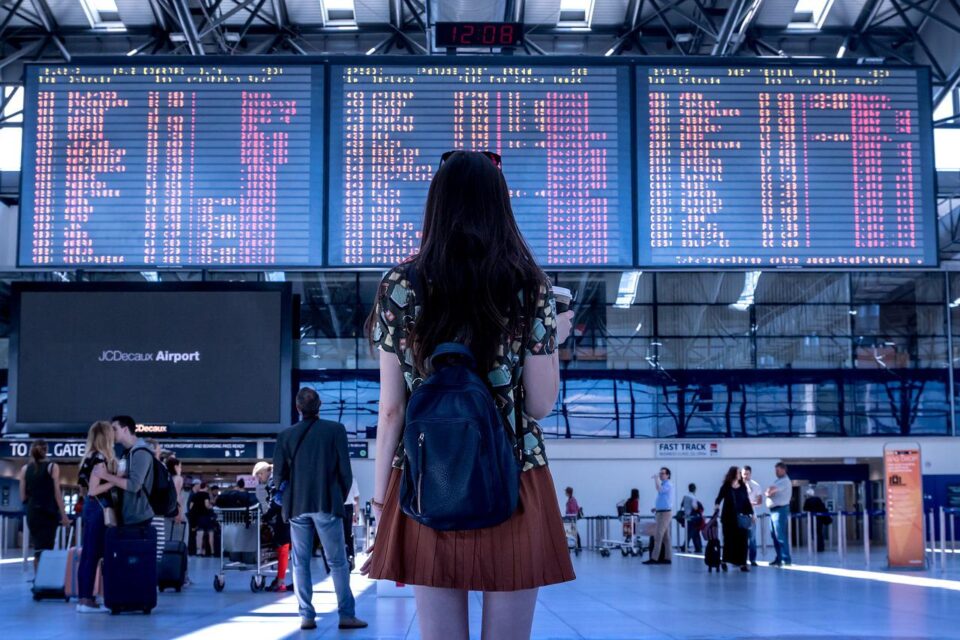
The U.S. Department of Transportation (DOT) has released a final regulation requiring airlines to quickly reimburse passengers with automatic cash refunds when owed, according to a statement made by the Biden-Harris Administration.
Under the new regulation, passengers will find it easier to get refunds when airlines dramatically alter or cancel flights, cause severe delays for checked baggage, or don’t supply the additional services they paid for.
According to a statement from the Biden-Harris Administration, the U.S. Department of Transportation (DOT) has published a final rule mandating airlines to promptly compensate customers with automatic cash refunds when they are eligible. The new rule would make it simpler for customers to receive refunds from airlines in cases when they drastically change or cancel flights, cause significant delays for checked luggage, or fail to provide the extra services they charged for.
Under the latest rule from the USDOT, passengers are guaranteed refunds in several scenarios:
- Canceled or Significantly Changed Flights: Passengers are entitled to refunds if their flight is canceled or significantly altered, including changes in departure or arrival times exceeding 3 hours domestically or 6 hours internationally, departures or arrivals from different airports, increased connections, downgrades in service class, or changes less accommodating to passengers with disabilities.
- Delayed Baggage Return: Passengers filing mishandled baggage reports can claim a refund for checked bag fees if their luggage is not returned within specific timeframes after flight arrival.
- Unprovided Extra Services: If airlines fail to deliver paid extra services like Wi-Fi, seat selection, or inflight entertainment, passengers can request refunds for those fees.
The final rule streamlines the refund process, ensuring it is:
- Automatic: Refunds are issued automatically without requiring passengers to request them.
- Prompt: Airlines must refund credit card purchases within seven business days and other payment methods within 20 calendar days.
- In Original Form of Payment: Refunds are provided in the original payment method used for purchase.
- Full Amount: Passengers receive full refunds minus the value of any portion of transportation already used, including government and airline fees.
Suggest banning family seating junk fees and ensuring that parents can travel with their kids at no additional cost. No airline promised to ensure fee-free family seating prior to efforts from President Biden and Secretary Buttigieg last year. Family seating is now guaranteed free of charge on four airlines, and the Department is working on a plan to eliminate family seating junk fees.
Propose to make passenger compensation and amenities mandatory so that travelers are taken care of when airlines cause flight delays or cancellations.
Airlines
The Nine Freedoms of the Air – Jetline Marvel
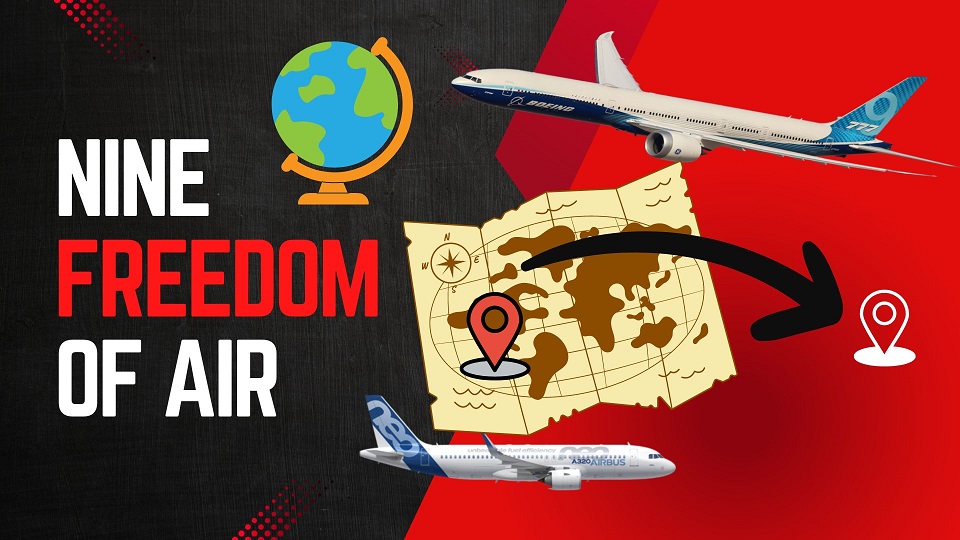
Most of us travel from one city to another city via road we need to get permission to that specific city if it is in another country like a visa or Road access permission to use its property for revenue purposes to carry passengers and Cargo. Similarly, In the airline Industry, it is also important that the Company have permission to fly and access that country whether it’s for stoppage flying above them, or Operating the passengers within that country This is called Freedom of the Air.
Some countries together they agree with certain conditions to access their Aerospace for to access for the airline to travel above their nation. If the bilateral is done for Their own countries’ airlines or other countries’ airlines. In this chapter, we understand how this thing is carried out. What all the condition has to look into that.
The Freedoms of the Air are international commercial aviation agreements (traffic rights) that grant a country’s airline(s) the privilege to enter and land in another country’s airspace. They were formulated in 1944 at an international gathering held in Chicago (known as the Chicago Convention) to establish uniformity in world air commerce. There are generally considered to be nine freedoms of the air.
Most nations of the world exchange first and second freedoms through the International Air Services Transit Agreement. The other freedoms,chase freedom airline miles when available, are usually established between countries in bilateral or multilateral air services agreements. The third and fourth freedoms are always granted together. The eighth and ninth freedoms (cabotage) have been exchanged only in limited instances
First Freedom:
The basic permission granted to an airline from one country (A) to fly through the airspace of another country (B)
Second Freedom:
The permission for a commercial airplane from country (A) to land and refuel (often called a technical stop) in another country (B).
Third Freedom :
The privilege for an airline to transport paying (Revenue) passengers from its home country (A) to another country (B).
Fourth Freedom
The rights for an airline to transport paying (Revenue )passengers from another country (B) to the airline’s home country (A).
Fifth Freedom
Fifth Freedom (also known as beyond rights): The rights for an airline to transport passengers from its home country (A) to a destination (B), then pick up and carry passengers to other international destinations (C).
Sixth Freedom:
Sixth Freedom (Combination of Third & Fourth Freedoms) The right for an airline to carry passengers or cargo between two foreign countries (B and C), provided the aircraft touches down in the airline’s home country (A).
Seventh Freedom:
The authorization for an airline to operate flights that start in a foreign country (B), skip its home country (A), and transport passengers to another international destination (C).
Eighth Freedom Air
The rights for an airline to transport passengers from one location within a country’s territory (B) to another point within the same country on a flight originating in the airline’s home country (A). This right is commonly referred to as cabotage and is notably scarce outside of Europe.
Ninth Freedom Air
The entitlement for an airline from a specific country (A) to begin a flight in a foreign country (B) and transport passengers from one location to another within that foreign country. This concept, also referred to as stand-alone cabotage, distinguishes itself from the traditional aviation definition of cabotage by not directly involving the airline’s home country.
Aviation
Air India’s B747 Makes Its Final Journey, Waving Farewell to Fans

In a poignant moment marking the end of an era in aviation history, Air India’s iconic Boeing 747 aircraft, affectionately known as the ‘Queen of the Skies,’ embarked on its ultimate journey from Mumbai’s international airport.
The departure, bound for Plainfield, USA, where it will undergo dismantling and part-stripping under the ownership of American AerSale, signals the closure of a storied chapter for the airline.
Once revered for transporting dignitaries ranging from prime ministers to presidents, the Boeing 747 has etched itself into aviation lore. Yet, as airlines worldwide pivot towards more contemporary and cost-effective aircraft, Air India’s decision to bid farewell to its remaining Boeing 747s reflects the pragmatic realities of today’s aviation landscape.
The sale of these majestic planes to AerSale represents a strategic move by Tata Group, Air India’s new custodian, towards optimizing operational efficiency and embracing modern industry standards. Out of the four aircraft sold, two will be repurposed into freighters, while the remaining pair will be meticulously disassembled to salvage valuable components.
The final flight from Mumbai witnessed a touching tribute as pilots performed a traditional ‘Wing Wave,’ symbolizing the conclusion of the Boeing 747‘s distinguished service with Air India. This poignant gesture encapsulates the deep sentiment attached to the aircraft’s departure and its significant contribution to the airline’s legacy.
As the Boeing 747 embarks on its journey to Plainfield, USA, nostalgia permeates the air, evoking memories of its maiden flight on March 22, 1971. Over five decades, Air India operated a total of 25 Boeing 747s, each leaving an indelible mark on the annals of aviation history.

